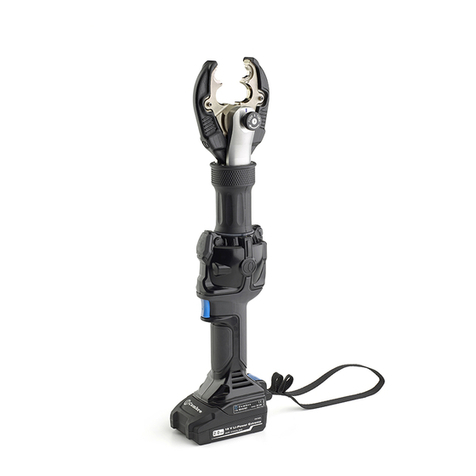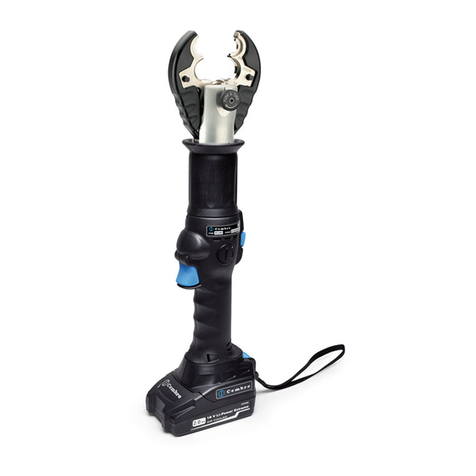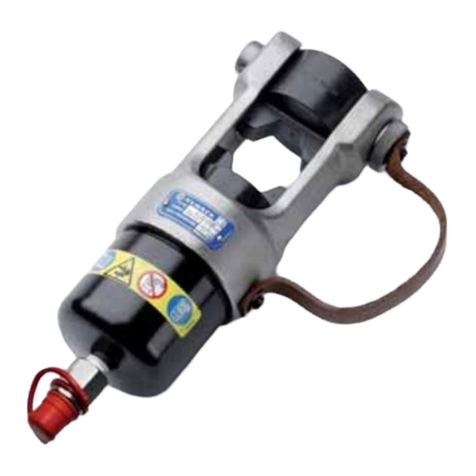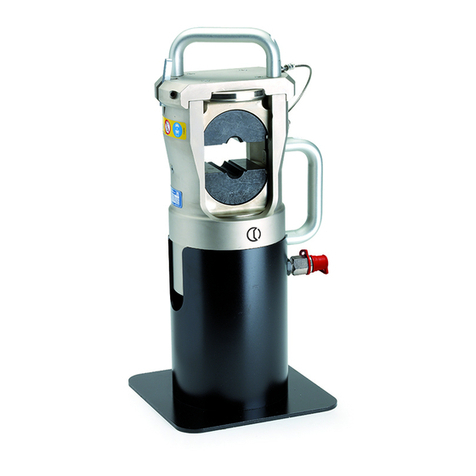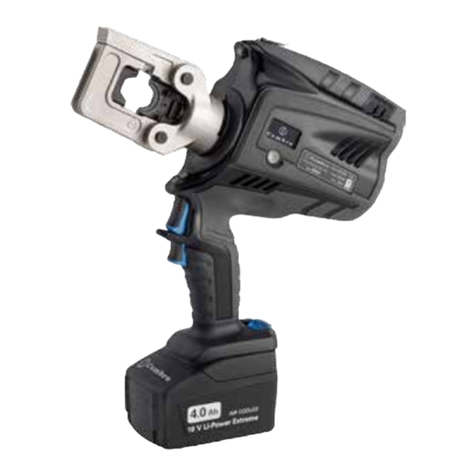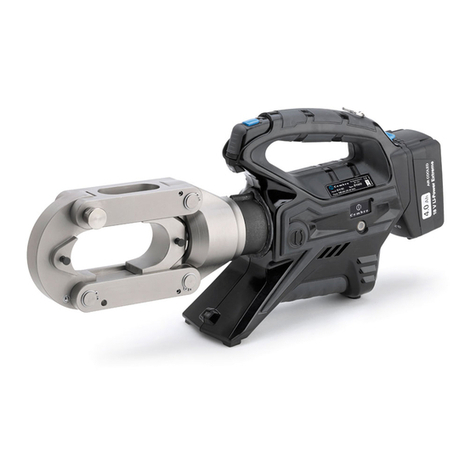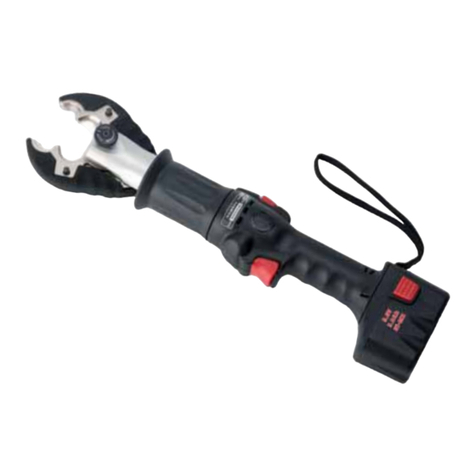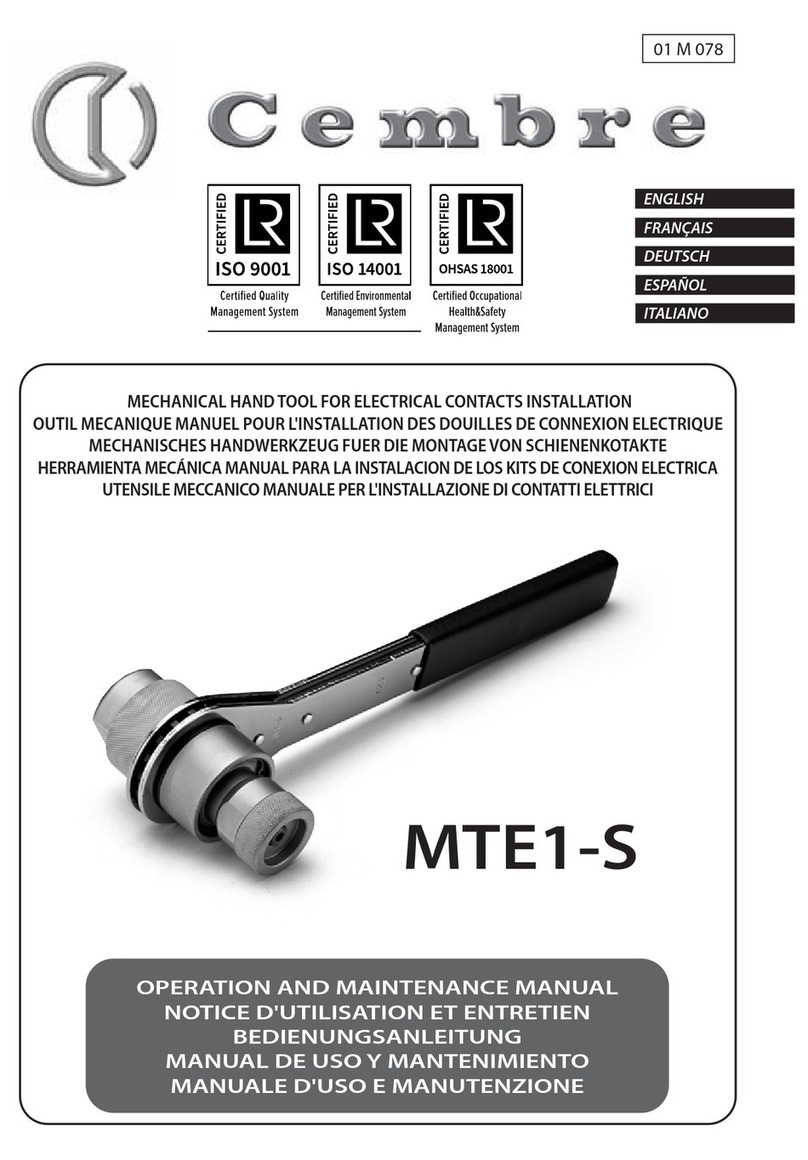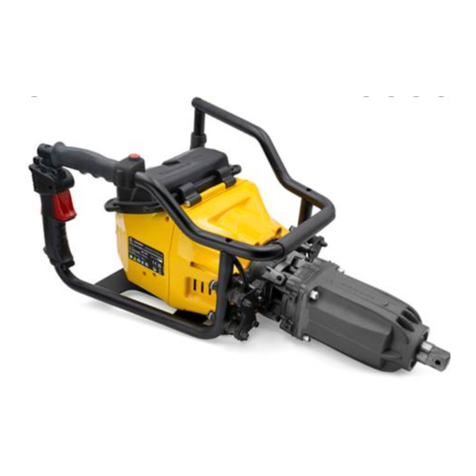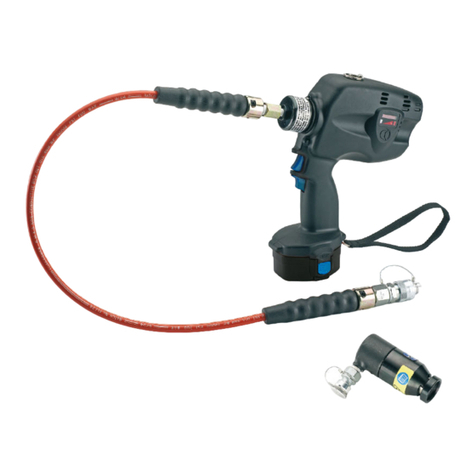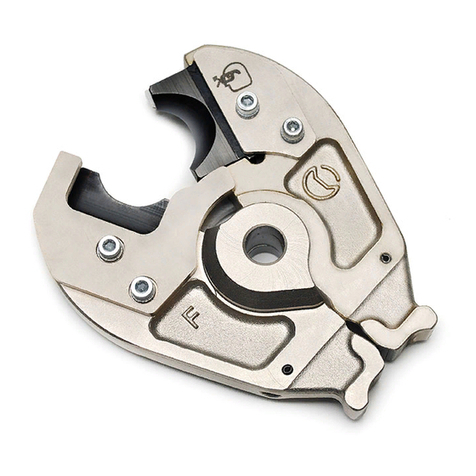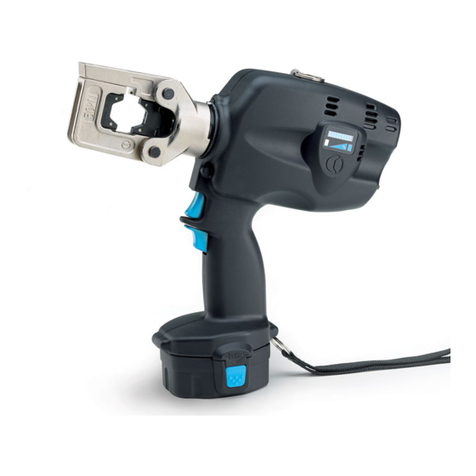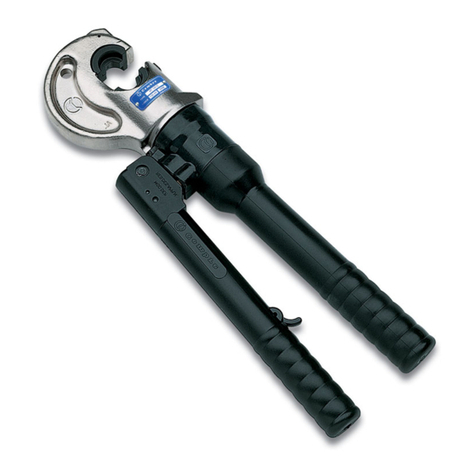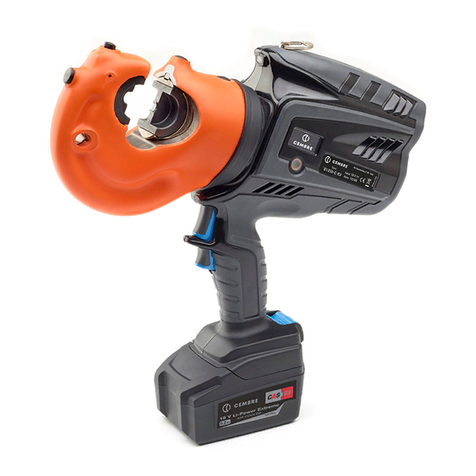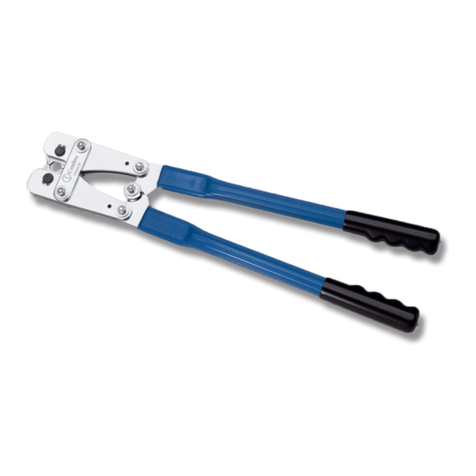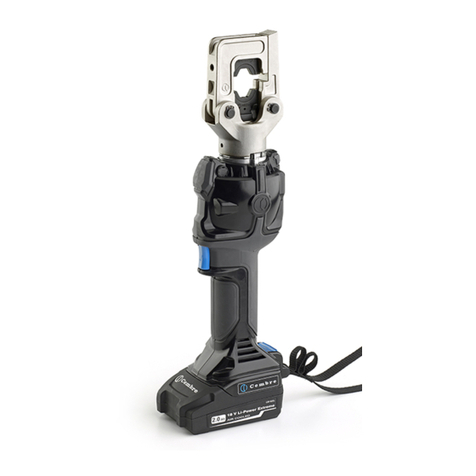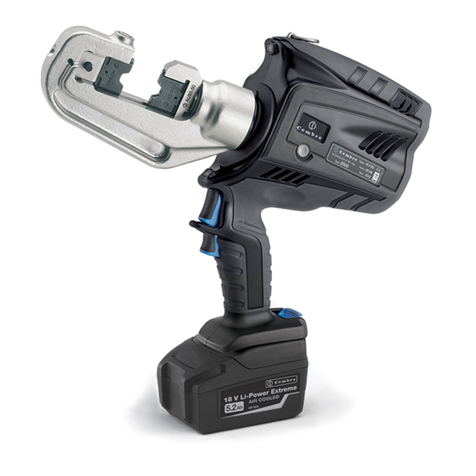
10
FRANÇAIS
2P
– Après ce déclenchement, même si l'on maintient le moteur actionné, on n'obtiendra
aucune poussée sur les matrices car l'huile sera déviée directement au réservoir.
2.4) Réouverture des matrices
Appuyer à fond sur le bouton de décompression (9) pour provoquer l'ouverture des matrices.
2.5) Rotation de la tête
La tête de l'outil pivote de 340° par rapport au corps, permettant à l'utilisateur de travailler dans la
meilleure position.
Attention: ne pas forcer la rotation de la tête, lorsque le circuit hydraulique est sous pression.
2.6) Remplacement des matrices
Pourleremplacementdesmatrices,lesenleverdeleurssièges enappuyantsurlesboutons(62 et65).
AVANT TOUT TOUJOURS ENLEVER LA MATRICE SUPÉRIEURE
2.7) Autonomie de la batterie
La batterie est équipée d’indicateurs à LED qui permettent de contrôler, à tout moment, son auto-
nomie résiduelle en appuyant sur la touche (P).
4 led allumées: autonomie maximale
2 led allumées: autonomie à 50 %
1 led clignotante: autonomie minimale, remplacer la batterie.
2.8) Introduction/replacement de la batterie
Pour remplacer la batterie, la retirer en appuyant sur le mécanisme de déblocage (15) (Voir Fig. 4, page
24), puis introduire la nouvelle batterie en la faisant coulisser sur les guides jusqu’au blocage complet.
3. PRECAUTIONS
Avant d’entreprendre des travaux sur des équipements électriques, veuillez vous assurer qu’aucun
élément aux abords de la zone de travail n’est sous tension. Dans le cas contraire, veuillez prendre
les précautions nécessaires pour opérer à proximité d’éléments sous tension, en conformité avec
la norme EN50110-1.
NEPAS UTILISER CET OUTIL SUR OU ACOTE DE CONDUCTEURS SOUS TENSION, SANS
PROTECTION INDIVIDUELLE ADEQUATE. LA NON OBSERVATION DE CETTE PRECAUTION
PEUT PROVOQUER DES LESIONS GRAVES OU MORTELLES.
L’OUTIL N’EST PAS CONÇU POUR UNE UTILISATION EN CONTINU; APRÈS AVOIR
EFFECTUÉ UNE QUANTITÉ D'OPERATIONS CONSÉCUTIVES ÀPARTIR D’UNE BATTERIE
COMPLÈTEMENT CHARGÉE, AU MOMENT DU REMPLACEMENT DE LA BATTERIE, NOUS
SUGGÉRONS D’OBSERVER UNE PÉRIODE D’ARRÊT POUR PERMETTRE LE REFROI-
DISSEMENT DE L’OUTIL.
L
AISSER REPOSER L’OUTIL MÊME EN CAS D’UTILISATION D’UN ALIMENTATEUR DE
RÉSEAU.
PROTÉGER L’OUTIL DE LA PLUIE ET DE L’HUMIDITÉ. L’EAU POURRAIT ENDOMMAGER
L’OUTIL ET LA BATTERIE LES OUTILS HYDRO-ELECTRIQUE NE DEVRAIENT PAS ÊTRE
UTILISÉS SOUS LA PLUIEET SOUS L’EAU.
